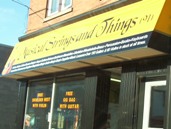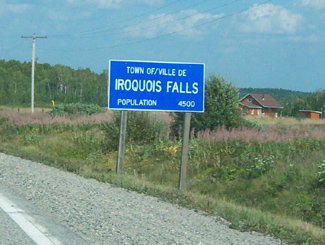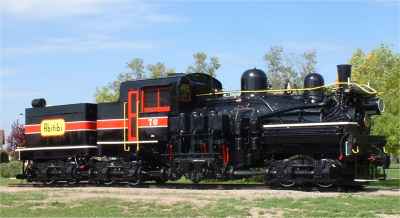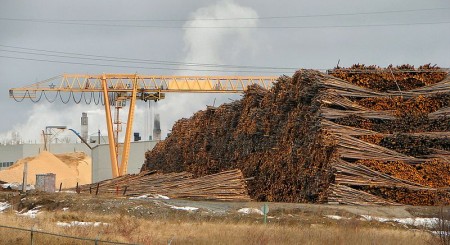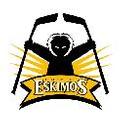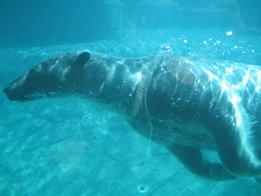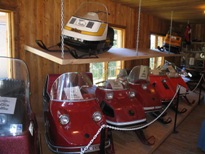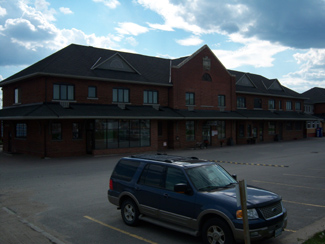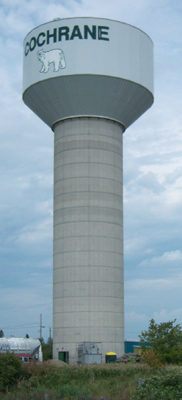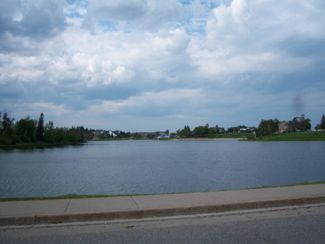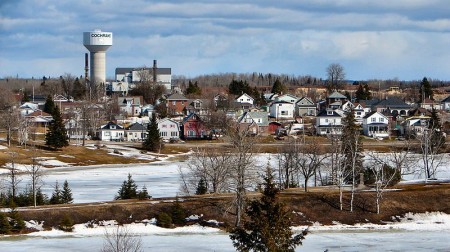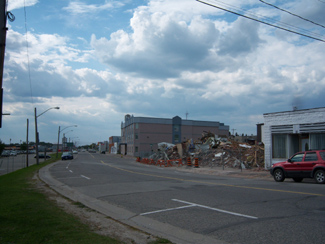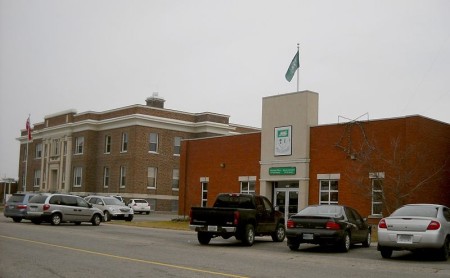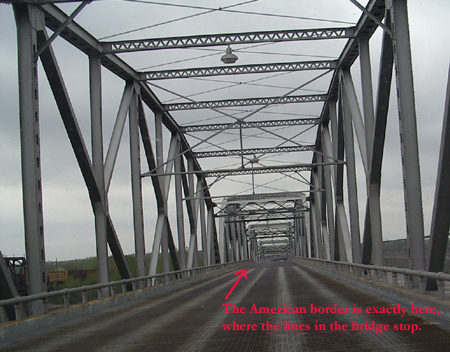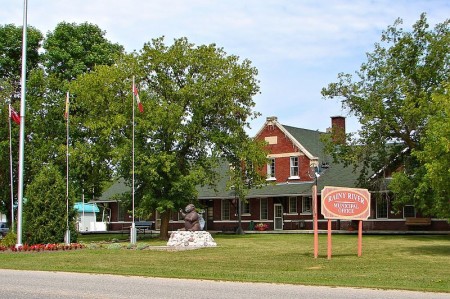Englehart is an anglophone town of 1500 on Highway 11. Right at the north end of the Temiskaming claybelt, you can tell that it’s near the end of farm country as there are farms all around yet the major employer is the Grant Forest Products Mill, which dominates the town from Highway 11. Englehart is about 30 minutes from Kirkland Lake.

I had my own photo of the mill but User P199’s at Wiki commons is so much better. This view is facing south on Ontario Highway 11.
The town was founded in 1908 and named after Jake Englehart, an American who moved to Canada at age 19 in 1860s to setup oil refineries in southern Ontario. After achieving success in the Petrolia area, he was appointed by the Province to run the ONTC rail line in 1905. His management brought stability and expansion to the provincial agency. But most importantly, Englehart helped rebuild the region after the devastating fires of 1911. He even spent his own money to feed those left homeless by the fires – he posted a sign at one of his rail stations saying that no-one need pass the station feeling hungry. In its heyday, Englehart even had a small Jewish population which helped settle immigrants into farming communities like Krugerdorf, and later provide work when these homesteads were abandoned.
Englehart has a cute, quiet downtown. It is a town of well kept houses, manicured lawns, and cute little parkettes. The old Temiskaming Locomotive 701 has been restored and displayed downtown – it was the last steam engine to prowl the ONTC tracks.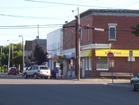 (A note to travellers – on my first trip to Englehart we stopped at the local library to use the washroom. That was an uncomfy decision. It was completely awkward – don’t forget that in a town like that, everyone knows you’re a stranger and it was completely conspicuous to walk in, pee, and walk out without so much as lifting a Chatelaine off the shelves. I mean, don’t get me wrong, no one said anything, but I just felt so conspicuous. Go at one of the gas stations on Highway 11 instead.)
(A note to travellers – on my first trip to Englehart we stopped at the local library to use the washroom. That was an uncomfy decision. It was completely awkward – don’t forget that in a town like that, everyone knows you’re a stranger and it was completely conspicuous to walk in, pee, and walk out without so much as lifting a Chatelaine off the shelves. I mean, don’t get me wrong, no one said anything, but I just felt so conspicuous. Go at one of the gas stations on Highway 11 instead.)
Englehart has a really nice little music store called Musical Strings n’ Things that recently moved into a larger location across form the town hall. It’s worth a visit, especially if you want to try your hand at the banjitar. Service is great. I’ve stopped in three times, and received better service than in any music shop I’ve ever dropped into – and I’ve never purchased a thing. And they know I’m not going to buy anything. I’m obviously from away, and it’s unlikely that I’m going stop in Englehart for a pee, a pop, and a mandolin. But each time, the shopkeeper tells me they’re just filling in for the owner who has just stepped out, but I’m welcome to play, try, or ogle at anything in the store.
A former housemate named Tara had family from the region, and she informed me of the local specialty – the Island Burger. Apparently, the hamburger is served at a Cousin’s Restaurant and is named the “Island Burger” as the hamburger is essentially an island in a sea of hot gravy and cheese curds. Sounds fantastic.
For food and drink there is the Olde Town Inn and Restaurant, a Subway, and a Coffee Time (all on Highway 11.) In town, there is Cousin’s for burgers or pizza (although I’m not totally sure if it is still open), Kim’s Pizza Plus, and a local diner, the Sister’s Cafe, which serves breakfast, lunch, and supper platters. My partner and I stopped in at Sister’s for a weekday lunch. Being not from Englehart, and more importantly being under the age of 65, we got some pretty surprised looks from the existing patrons and even the staff, but we survived, everyone was friendly, service was great and so was lunch.
There’s a new drop-in café catering to teens on 8th Avenue, the Oasis Teen Café. There is gas on Highway 11 and a reasonable-sized Valumart in town for those who need groceries. Englehart also has a full blown LCBO. In terms of shopping there is Memory Lane Antiques or Treasure Chest Antiques on Highway 11, as well as Marion’s Emporium and Christmas store in town. There’s also a little home-run spa in town.
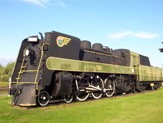
First Cochrane, next Iroquois Falls, now Englehart’s turn with the old locos
Englehart has a few tourist activities – most notably the historical museum. There are also walking trails, one of which goes to nearby Kap-Kig-Iwan Provincial Park and its picture perfect waterfalls. Every June the town hosts the annual Black Fly Festival, and the weekend after Labour Day means it’s fall fair time.
Of course, with Grant Forest Products in town, Englehart also has a fairly substantial woodpile.
Thanks to Justin and Tara for the Englehart info. Check out some more photos here, here and here.
